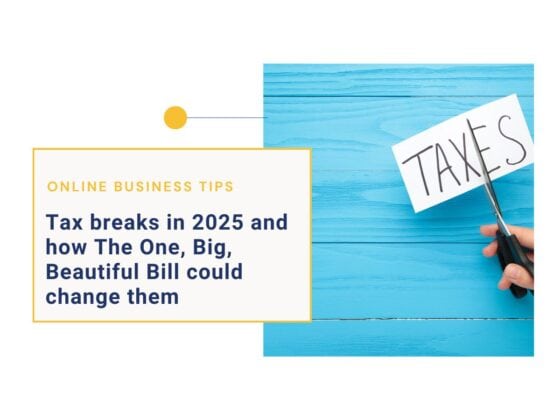When financial challenges arise, it can be tempting to take an early withdrawal from your traditional IRA. However, making the decision without understanding the tax implications is risky.
Here’s what you need to know, including your options for avoiding the 10% early withdrawal penalty tax.
First off, the penalty doesn’t always apply.
A withdrawal from a traditional IRA will almost always constitute taxable income. The percentage of the withdrawal that will be considered taxable is dependent on whether you’ve made any nondeductible contributions to the account.
If you have made nondeductible contributions, each withdrawal consists of a proportionate amount of your total nondeductible contributions. This portion of the withdrawal is tax-free. The proportionate amount of each withdrawal that consists of deductible contributions and accumulated earnings is taxable.
Of course, 100% of a withdrawal is taxable if you’ve never made any nondeductible contributions.
Exceptions to the 10% penalty tax
If any of these 11 exceptions are met, you may be able to avoid paying the 10% early withdrawal penalty tax on the taxable amount of your withdrawal.
1. The withdrawal is a substantially equal periodic payment (SEPP)
These annuity-like withdrawals must be taken for at least five years—or until you turn 59½. The rules for SEPPs are complicated, though, so it’s best to meet with an accountant before deciding to proceed with this route.
2. The withdrawal is for qualified medical expenses
Medical expenses are a common reason to make an early withdrawal. If your qualified medical expenses exceed 7.5% of your adjusted gross income, the amount of excess won’t be subject to the tax.
3. The withdrawal is to cover higher education expenses
If you make the withdrawal and pay qualified higher education expenses in the same year, an equivalent amount of the withdrawal will be penalty-free.
4. The withdrawal will cover health insurance premiums during a period of unemployment
If you have received unemployment compensation for 12 consecutive weeks or longer from the state or federal government during the current or previous year, you can use the withdrawal to cover health insurance premiums without a penalty.
5. There is a birth or adoption in your immediate family
For each eligible birth or adoption, you may make a withdrawal of up to $5,000 penalty-free.
6. You’re purchasing your first home
You may make a penalty-free withdrawal within 120 days of the purchase to cover qualified principal residence acquisition costs. However, this type of tax-exempt withdrawal is subject to a $10,000 lifetime limit.
7. You are a qualifying military reservist
If you are a military reserve member called to active duty for at least 180 days (or an indefinite period), your early withdrawal will be exempt from the penalty.
8. You’re making the withdrawal after a qualifying disability
If you become mentally or physically disabled to the extent that you can no longer do your job or a similar gainful activity, your withdrawal will be exempt from the penalty tax IF the disability is expected to lead to death or be of long/indefinite duration.
9. The IRS makes a withdrawal to cover debt
If the IRS makes a withdrawal to levy against the account, the tax won’t be charged.
10. Withdrawals after death
In most cases, withdrawals taken from an IRA after the account owner’s death are exempt from the 10% penalty. If, however, the funds are rolled over into the surviving spouse’s IRA or the surviving spouse elects to treat it as their own account, the penalty will still apply.
11. A personal or family emergency is expected
Starting in 2024, a new exception for withdrawals used for unforeseeable or immediate financial needs relating to personal or family emergencies will be available thanks to the SECURE 2.0 law. Only one distribution of $1,000 is allowed per year, and you may repay it within three years.
Be proactive
As you can see, exceptions to the 10% penalty tax are quite specific. As such, most or all of your early traditional IRA withdrawals will likely be subject to the tax. This can push you into a higher federal income tax bracket. This can possibly lead to you paying both a 10% early withdrawal penalty and higher state and federal tax payments.
Plan your finances accordingly if you plan to make a withdrawal.
Questions? Smolin can help.
This article provides only general information, and many penalty tax exemptions have additional requirements we haven’t covered. If you’re considering making an early withdrawal from your traditional IRA account, the best course of action is to consult with your accountant.


